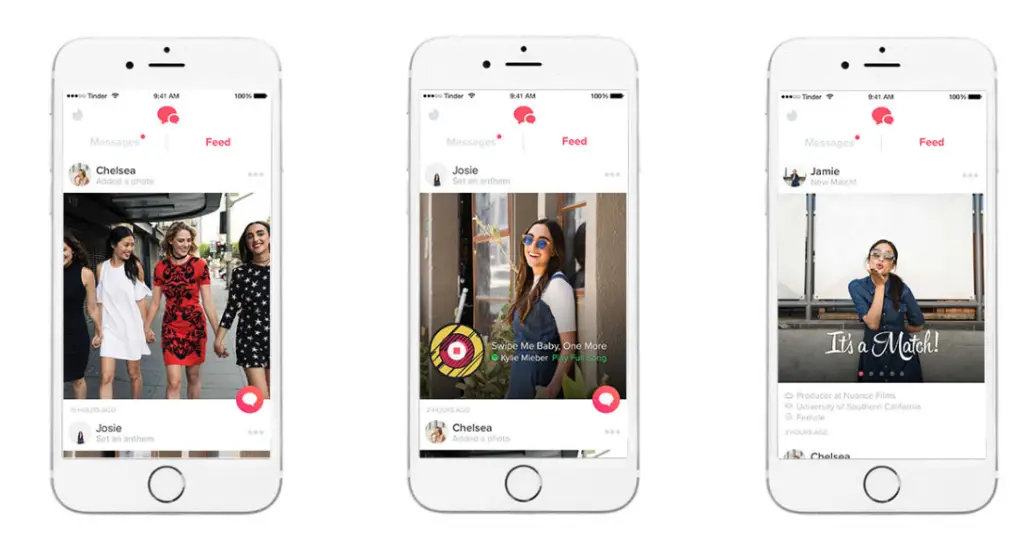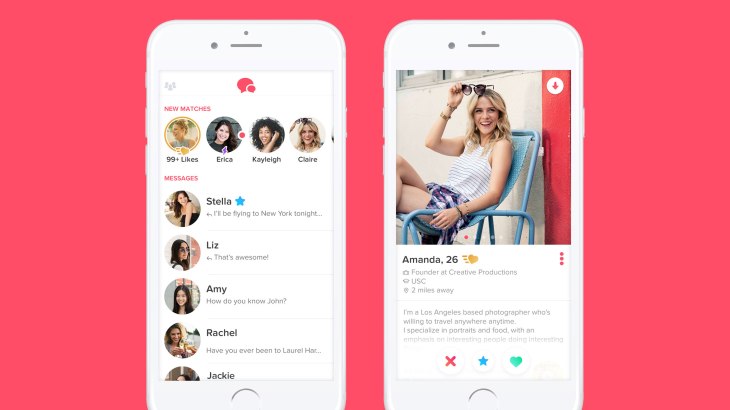Recently Online Tinder
Let’s be real, the dating landscape looks very different today, as most people are meeting online. With Tinder, the world’s most popular free dating app, you have millions of other single people at your fingertips and they’re all ready to meet someone like you. Whether you’re straight or in the LGBTQIA community, Tinder’s here to. Jul 23, 2020 Tinder’s Recently Active text will be displayed on profiles that have been active in Tinder in the last 24 hours. However, you won’t see when exactly was the last time they have been active or if they are using Tinder at that moment. To be honest, I think this feature is pretty useless. If you are using Tinder actively and check it at least.
If you’ve been itching to Tinder swipe on your work computer without your boss noticing, now is your chance.
After beta testing Tinder Online abroad in Argentina, Brazil, Colombia, Indonesia, Italy, Mexico, the Philippines, and Sweden, it looks like the desktop version of everyone’s favorite “hookup app” has been quietly unveiled in the U.S.
It’s not clear when the web version became available, but the dating platform confirmed to Inverse that it “rolled out recently.”
With sneaky features like “Work Mode,” the equivalent of hiding your AIM window from your mom in the early aughts, it’s safe to say Tinder is encouraging swiping, matching, and chatting on the clock or in class.
Case in point: clicking on the small briefcase icon will take you to this fake Google Doc-esque page, making it look like you’re working away.
“Introducing Tinder Online: a fun, new web experience and your English professor’s worst nightmare,” the company’s blog wrote at the time of Tinder Online’s announcement earlier this year.
At the time, Head of Product at Tinder Brian Norgard told TechCrunch that despite years of being a mobile-native app, the web version is “meant to serve users in emerging markets who don’t have enough storage on their phone” and allow users the option to do their swiping and messaging on the desktop as opposed to their smaller smartphones.
Indeed, with keyboard shortcuts to help you swipe quickly on (or off) your lunch break, Tinder Online looks as if it has been designed specifically to be used with coworkers-over-your-shoulder in mind.


The web version comes on the heels of the company’s recently announced new features to “enhance the way users interact on the app,” i.e. filter out the sleaziness it’s become known for.
“These features were created by the women of Tinder, for women, to help rid their ecosystem of d-bags,” the company stated earlier this month.
Despite the logical reasoning behind the launch of the desktop version, the company declined to comment on the branding along with the shift to Tinder Online.
When it comes to finding a date on Tinder a lot depends on who you see, who sees you, and who you ultimately match with after you both swipe right. But how does Tinder know who to show you to? That’s what the Tinder algorithm is for.
There’s been a lot written about the Tinder algorithm in recent years (we’ve even written about it here on The Date Mix) and what it’s based on. Is it attractiveness? Distance? Does your college or job title come into play? Or what about other basic information like your age? It’s been a bit of a guessing game when it comes to knowing just how the app matches people, but recently Tinder came out with some new insights about how their algorithm works, and it’s not how you may think.
Here are some of the key insights from Tinder’s 2019 algorithm update:
1. The most important thing is how active you are on the app.
Since Tinder started, the app has grown in popularity and sparked the curiosity of people all over the world. But with that curiosity comes some drawbacks. A lot of people join the app just to take a look around and never have any intention of actually dating. That means there are a lot of profiles on the app that real daters don’t want to waste their time with.
That’s one of the many reasons Tinder’s algorithm uses user activity to match people with each other.
“The most important factor that can help you improve your match potential on Tinder is…using the app,” the company explained in its March blog post about the algorithm. “We prioritize potential matches who are active, and active at the same time. We don’t want to waste your time showing you profiles of inactive users.”
2. Things like ethnicity, kids, height, and religion don’t matter as much.
Unlike a lot of other dating apps, Tinder doesn’t ask its users for a lot of information. They don’t even collect info. like your religion, ethnicity, whether you’ve been divorced, or if you have kids so they also don’t use that information to match you with other people.
“We don’t care (or store) whether you’re black, white, magenta or blue. Our algorithm doesn’t know if you make $10 or $10 million a year,” the company said. “And we aren’t going to show you all the blondes first because they supposedly have more fun.”
However, even though the Tinder algorithm doesn’t explicitly match people based on ethnicity or other features, they do use a user’s implicit swiping preferences to inform their matches. For example, if a user swipes right on potential matches with long hair and glasses a lot, Tinder knows they’re more likely to keep swiping right on people with those characteristics. Similar to how Netflix will show you movies, “Based on your interest in X,” Tinder’s algorithm will show you people who have characteristics in common with people you’ve already swiped right on.
3. The Elo score isn’t important anymore. (Wait… or is it?)
According to Tinder, back in the day they did rely on your Elo score (that was thought of as a type of attractiveness score) to match you with other people who had a similar score.
“This part of our algorithm compared Likes and Nopes,” said Tinder’s blog post. “And was utilized to show you potential matches who may be a fit for you, based on similarities in the way others would engage with profiles.”
Though their language is a little less clear on this one, it sounds like the Elo score matched you with other people who “engage with profiles” in the same way you do. (AKA people who say yes and get said yes to in the same way you do. As well as people who say no and get said no to in the same way you do.) Their new system is slightly different however.
“Our current system adjusts the potential matches you see each and every time your profile is Liked or Noped,” they explained, “and any changes to the order of your potential matches are reflected within 24 hours or so.”
So instead of having an attractiveness score that determines who you see and don’t see, now the app constantly adjusts your matches based on who swipes left or right on you—no score needed. Attractiveness is still a factor (which makes sense—after all, it is an important aspect of dating and romantic relationships) but it’s implemented in a different way.

4. Explicit preferences.
And the most simple (and perhaps obvious) factor is the preferences you set for yourself. Tinder does take into account your age and gender preferences as well as the preferences of the people they match you with. For instance, if you’re over 60 and only want to meet people who are in their 20s, you may run out of potential matches because they’ll only show you 20 year-olds who also want to match with 60 year-olds. So don’t get too crazy with your filters, the preferences have to work both ways.
Tinder Online Version

Like most algorithms, Tinder’s is constantly changing and evolving. And Tinder itself has said that they can’t reveal everything that goes into their secret sauce. Keep in mind that your activity and responsiveness plays a factor, avoid saying yes to everyone you see, and be honest with your swipes. The algorithm is designed to help you be successful. Let it do its work and you just may find that it’s smarter than you think.
Subscribe to our newsletter
Facebook Recently Online
By clicking Submit you agree to Zoosk’s terms of use and privacy policy.